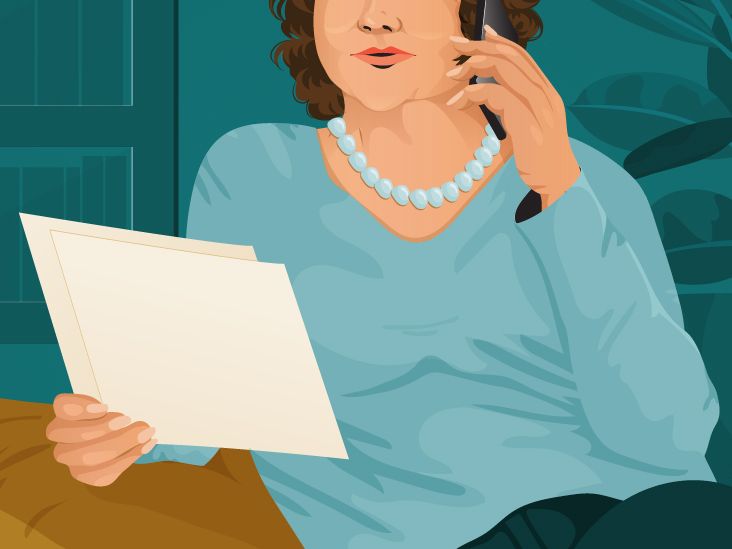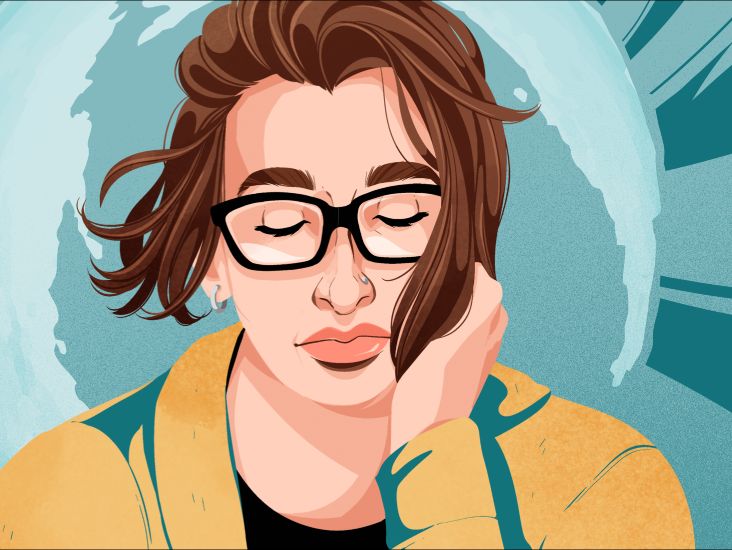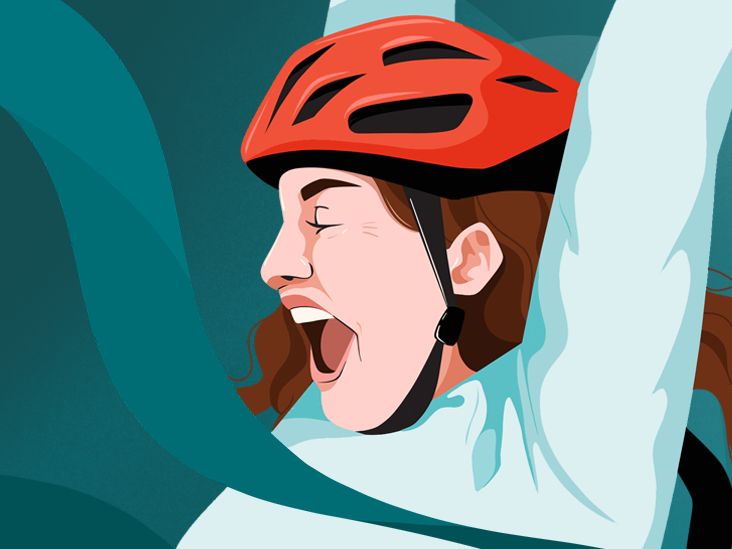
This essay includes subject matter that may be difficult or sensitive for some readers, including depression and suicidal thoughts.
Since childhood, I’ve had this nagging feeling there was something wrong with my body.
My ankles have a tendency to twist, violently and suddenly, sending me crashing to the ground. I’m notorious for bumping into door jambs and dropping fragile objects. My skin is usually decorated with bruises of unknown origin.
Doctors diagnosed me with Sever’s Disease, cellulitis, tendonitis, spondylolisthesis, frostbite, fibromyalgia — all before finishing high school. I still have nerve damage in my armpits from my many stints on crutches. My back has always hurt. My feet have always ached. My fragile skin splits open if you look at it wrong.
Yet every doctor I saw treated my frequent injuries as one-off events. I was scolded by teachers, my mother, and friends’ parents for my klutziness. They said I walked too fast. I’m careless. According to my brothers, I was a dramatic, over-the-top, attention-seeking crybaby.
Clearly, my frequent injuries were my fault; I just needed to slow down and pay attention to my surroundings.
Somehow, this klutzy drama queen got into NYU’s Tisch School of the Arts acting program. Conservatory acting training is grueling — 27 hours a week of physically demanding classes like yoga and movement, 8 hours of academic classes, and rehearsals most nights.
A chubby teenager with a bad back, I was not much of an exerciser. But I was astonished to learn that I was incredibly flexible. I could put my leg behind my head! I could pop my shoulder out of its socket if I twisted just so. My body wasn’t broken — it was strong and flexible and unique. I spent hours practicing yoga in my dorm, fascinated by the weird shapes I could twist my body into.
Nightly stretching was also a necessity. My muscles and joints were constantly sore, making me lurch around the West Village like a scarecrow. Everything hurt.
I developed a dull pain in my right hip. By sophomore year, the pain had spread to both hips, plus burning nerve pain that shot down my legs. I got a new diagnosis: bilateral hip bursitis. Physical therapy and cortisone shots brought no relief. It’s been almost 20 years since that pain started, and I’ve yet to experience a day without it.
I pushed through the pain and managed to get my degree. In my mid-20s, I stopped thinking there was something wrong with my body, attributing my injuries and chronic pain to klutziness and “aging,” in that adorably naive way 25-year-olds think they’re old. I figured everyone’s joints must hurt, but no one else is complaining.
I stopped talking about my pain. I stopped going to doctors, too, and was uninsured for many years.
By age 30, life was great. I lived in beautiful Oakland, California, making ends meet with freelance writing and odd jobs. Frustrated by sexism in comedy, I started my own show called “Man Haters” at historic Oakland gay bar The White Horse. I prioritized comics who were queer, trans, or new to the scene. We developed a cult following, won a few awards, and were featured in comedy festivals and a Viceland TV show. I was living the dream.
I marveled at my good fortune. I was doing it — paying my rent with comedy, forging a freelance writing career, and living an unapologetically queer life. I also worked 7 days a week, chain-smoked, and barely slept. But despite the physical pain, these grueling hours combined with my late-20s angst were addictive. I felt invincible.
Shortly after my 30th birthday, I fell deeply — and shockingly — in love with Matt, the man who would become my husband. Life became even more magical. After 5 weeks of dating, we got engaged, and soon moved into a one bedroom apartment in a dreamy 1895 Victorian mansion. In lieu of a ring, Matt got me an engagement corgi because he gets me (and because I asked for one). I named her Vincent. We were a happy family of 3.
Two months after moving in together, I plopped down on the couch and immediately knew something terrible had happened. Electric-shock-like pain shot through my lower back. When I tried to get up, I screamed in agony and fell back onto the couch. I could barely move and couldn’t stand upright.
I needed Matt’s help to get in and out of bed, and to go to the bathroom. After 2 days, he convinced me to go to the emergency room. The ER doctor spent mere minutes with me and ordered no tests. He instructed me to follow up with the primary care physician I didn’t have (I was still uninsured). I got a morphine injection, Vicodin and Valium prescriptions, and a $3,500 bill.
The morphine did nothing, but the pills allowed me to sleep through most of the next week. On New Year’s Eve, Matt woke me at midnight to give me a kiss and a sip of champagne. I was asleep again by 12:05. It was our first New Year’s as a couple.
That was the first of many injuries I racked up in the next year.
The lingering pain from my 2013 elbow fracture got so bad, I couldn’t lift a glass of water. I had shooting pains from my neck to my wrists. My hands grew increasingly numb. I fell several times. I sprained my thumb. I sprained my ankles. I sprained my wrist. I fainted while showering. I broke out in strange, itchy rashes. To prevent more falls, I begrudgingly started using a cane part time. I injured my back days before we eloped and spent much of our honeymoon resting.
My body was falling apart, and so was my life. I started canceling comedy shows. I cried every day. I considered suicide, but I couldn’t do that to Matt. Sometimes I resented him for that.
Was I crazy? Was this my fault? I obsessively googled my symptoms. Was it autoimmune? An infection? Arthritis? What the hell was wrong with me?
Help is out there
If you or someone you know is in crisis and considering suicide or self-harm, please seek support:
- Call or text the 988 Suicide and Crisis Lifeline at 988.
- Text HOME to the Crisis Text Line at 741741.
- Not in the United States? Find a helpline in your country with Befrienders Worldwide.
- Call 911 or your local emergency services number if you feel safe to do so.
If you’re calling on behalf of someone else, stay with them until help arrives. You may remove weapons or substances that can cause harm if you can do so safely.
If you are not in the same household, stay on the phone with them until help arrives.
My joint pain had become constant. I got insurance, saw many doctors, and had many tests done. It wasn’t autoimmune. I had high inflammation markers but nothing definitive. Each new doctor treated me like I was crazy or overdramatic. In fairness, I broke down and sobbed at each appointment. I considered checking myself into a psychiatric hospital. I worried my new husband would leave me.
By March 2018, I was desperate.
I took to Facebook, where I revealed my health struggles and asked for advice. An acquaintance, Ana, reached out. She was diagnosed with Ehlers-Danlos syndrome (EDS). I had googled EDS when she posted about it but closed the browser tab after 10 seconds. No use getting obsessed over another diagnosis that would end up being wrong.
Ana persisted. She asked me strange questions.
Was I weirdly flexible? Yes.
Did I fall down a lot? Yes.
Was I frequently dizzy? Yes.
Did I have very soft skin and strange scars? Yes, yes.
Ana asked to examine my joints. She bent back my elbows and knees, had me touch my toes, and bent my thumbs backward until they touched my wrists. None of this was painful, but it was confusing.
Ana nodded knowingly and declared, “You have EDS. I just did The Beighton Scale test on you. You need 5 out of 9 to be considered hypermobile. You scored a 7. Tell your doctor this and ask for a genetics referral.”
I was skeptical. EDS is a genetic connective tissue disorder caused by faulty collagen. It’s characterized by hypermobile joints, chronic pain, and fragile skin. But I wasn’t even convinced EDS was even real — I mean, why had I never heard of it? That night, I devoured everything I could find on the internet about the condition.
Oh. Whoa. This was it.
Reading about EDS felt like reading my own diary. A lifetime of odd injuries now made sense. That time I got frostbite from a mere 2 minutes of chasing my blind corgi in the snow, barefoot. Why people have always marveled at my soft skin, even though I never used lotion. There was one incident where a simple eyebrow wax tore off several layers of skin.
A month later, Matt and I drove to the Kaiser Oakland Genetics office. It was Friday the 13th, making an already heavy day feel even eerier. I was equally terrified of two opposing possibilities — that this would be another dead end or that this would indeed be the answer.
My geneticist looked like Kathryn Hahn, took my words at face value, and was thorough in her evaluation. She confirmed my Beighton Scale score of 7, found the tell-tale atrophic “cigarette paper” scars on my legs and piezogenic papules on my heels, and confirmed my “unusually velvety soft skin.” Yes, that’s really how doctors refer to EDS skin.
Maybe it’s Maybelline; maybe she’s born with a connective tissue disorder.
After 2 hours, Dr. Not-Kathryn-Hahn diagnosed me with hypermobile Ehlers-Danlos syndrome. I wasn’t crazy; I really did have wonky collagen. I was flooded with relief, anger, and terror. It was vindicating to know I had been right all along; something was wrong.
There are
My shiny new diagnosis didn’t bring the pain relief I (literally) ached for. As I hobbled into each new specialist’s office, I was sure this one would have the magic bullet that would cure me. Each time I left without a solution, I was devastated anew.
My internet searches terrified me. According to other EDS sufferers, I was doomed to a lonely life in bed, would soon need a wheelchair, and would never hold down a job.
I was so depressed, I could barely function. I withdrew from my friends. I quit standup. My Man Haters co-host was increasingly cold and unsupportive, so I said I needed a break, and promised to write a message to our mailing list and tie up loose ends.
I dropped the ball on those promises. I was too broken to care. I struggled with the loss of my comedian identity. Seven years of busting my ass to make it in comedy, and for what? What was the point?
I’m ashamed to admit that, for a time, I took out my anger on my sweet Matt. Haunted by the countless stories of women whose male partners left them when they became disabled, I was convinced he would leave me.
I told him I was “giving him an out” and that he could divorce me with no hard feelings. We’d only been married 4 months at the time. I was a useless wife; he hadn’t signed up for this. I was too much. He could go.
He did not appreciate my generous offer.
“If you want to leave, then leave. But don’t project that onto me. You’re my wife, and that means I did sign up for this,” Matt told me, definitively. “I will do anything for you. Nothing could make me stop loving you. I’m in this for the long haul. Stop treating me like this. It breaks my heart when you tell me to leave.”
He was right.
I believed him and stopped picking fights. I found a physical therapist who specialized in EDS and helped me regain my strength. A brilliant and kind orthopedist named Dr. Bosley eased my joint pain with prolotherapy, monthly trigger point injections, and compassionate, nonjudgmental care.
Exercise is one of the best treatments for EDS, so I started hobbling around the block. Eventually, I worked my way up to 3-mile hikes, my happy corgi by my side instead of my cane. I got more sleep. I reconnected with friends. I started feeling like myself again.
It’s been just over 4 years since my EDS diagnosis. It took about a year to move through the grief process and find acceptance. Now, EDS is just one part of my life. It’s not my identity; my life doesn’t revolve around my illness.
I still have daily pain, but less than I did 4 years ago. I’m grateful for the good days. I’ve learned how to get through the bad days. Our corgi Vincent is 5, and Matt and I have been married for 4 1/2 years. His patience, care, and handsome face still take my breath away. I’m so glad I let him love me. Phew.
Real talk: EDS sucks. I would prefer nonmutant collagen. But I make it work.
And the internet was wrong. My life is not over.
After my diagnosis, what I badly needed was hope. Now, I try to spread hope with my Healthline chronic pain guides and Tissue Issues advice column. I was recently hired as a full-time editor at Oar Health, an addiction treatment startup. I don’t miss standup comedy. I love my life.
Writing this was more emotional than I anticipated. I stayed up all night — thanks to two pots of coffee — obsessing over each word (don’t try this at home, readers). It was painful recounting these memories. When I was diagnosed in 2018, I thought my life was over.
I couldn’t find the hope I so desperately needed, so I made my own. And you know what? I believe there’s hope for you, too.
Ash Fisher is a writer and comedian based in Portland, Oregon. She was voted 2017 Best Comedian Runner-Up by East Bay Express, was featured on Viceland’s comedy documentary “Funny How?,” and has performed in SF Sketchfest several times. Ash holds a BFA in Theatre from NYU’s Tisch School of the Arts. Her life revolves around her sneaky corgi named Vincent. She is the Community and Content Manager at Oar Health.
Read more of Ash’s work at her website or follow her on Instagram.



